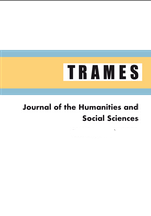CIRCASSIANS IN RUSSIA AND TURKEY: DIVIDED ETHNIC GROUP FROM SELF-CONSCIOUSNESS TO CONSOLIDATION
CIRCASSIANS IN RUSSIA AND TURKEY: DIVIDED ETHNIC GROUP FROM SELF-CONSCIOUSNESS TO CONSOLIDATION
Author(s): Tatiana N. Litvinova, David G. BdoyanSubject(s): Government/Political systems, Politics and society, 19th Century, Migration Studies, Inter-Ethnic Relations, Ethnic Minorities Studies, Politics and Identity, Peace and Conflict Studies
Published by: Teaduste Akadeemia Kirjastus
Keywords: Circassians; Caucasian War; Russia; Turkey; ethnic organizations; divided ethnic group; diaspora; consolidation;
Summary/Abstract: The article considers the phenomenon of divided ethnic groups and their political consolidation across the state borders on the example of Circassians in Turkey and Russia. The reason for the Circassian division was a series of refugee waves from the Russian Empire in the mid-nineteenth century. The Turkish Circassian diaspora is the largest outside the homeland accounting for about 2.5 million people. Those Circassians who stayed in the North Caucasus (about 700 000), mostly inhabit four subjects of the Russian Federation. The parts of divided Circassians in Russia and Turkey with their organizations make attempts for consolidation and cultural cooperation through state boundaries, which have legal, cultural, informational and international consequences. While the Russian Circassian organizations are currently showing a more loyal attitude towards the federal center, the mobilization of KAFFED and Turkish Circassians in general is intensifying both in international issues and in the internal political struggle in Turkey.
Journal: TRAMES
- Issue Year: XXV/2021
- Issue No: 4
- Page Range: 421-435
- Page Count: 15
- Language: English

